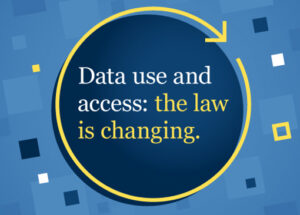
Managing access and equipment for staff
When employing new staff, particularly in roles that involve using software or working with information technology (IT), there are several key elements that you need to consider to ensure they are able to do their jobs being helped, not hindered, by their software and computers.
In larger companies, an IT professional or manager will be able to handle this, but you may find when starting out at that you, or another member of staff will need to take on some of this responsibility – potentially with the support of a consultant. And with many companies now doing a lot of their work in cloud-based computing with intuitive, easy-to-use software, this can be a possibility if you do not have very bespoke software needs.
Either way, it is good to familiarise yourself with the essential steps that need to be considered when setting employees up with IT so you can be sure to complete them, or know to confirm that they are being delivered by your IT Manager.

Hardware and software requirements
Determine the hardware and software requirements for the new employee’s role. Ensure that their computer or device is equipped with the necessary specifications, such as processing power, memory, and storage. Provide access to essential software applications and tools, including email, productivity or office suites (such as Microsoft Office or Google Suite), and any industry-specific software that might be required.
User accounts and access
You will need to set up user accounts for the new employee, including email, application and possibly network accounts. Each employee should have appropriate access permissions to the systems, data, and resources they need to perform their job effectively that is relevant to their role.
Security and compliance
Data security is paramount in any modern business, and should be addressed when an employee starts so that they know what their responsibilities are and how the company policies work. If they are going to be working with personal data, it is especially important that they are trained on cyber-security best practices, such as password management, data protection, data sharing, use of personal data, and not leaving the business’ systems open to attack.
Employees should also know what counts as ‘acceptable use’ of their devices, or when accessing the company wifi or networks with their personal devices. Even if you adopt a relatively laissez-faire attitude, setting explicit rules and guidelines around things like personal browsing or use of social media avoids doubt and confusion.
Email and messaging tools
Most organisations will use email within an established office software package, such as Microsoft Outlook or Gmail. But in recent years, many have moved into using more messaging functions within software such as Microsoft Teams or in dedicated messaging app such as Slack or WhatsApp. Not every communication is appropriate for every channel. Provide guidance on how and when to use these tools effectively for both internal and external communication. Model this behaviour yourself so that they understand what it looks like in practice.
Network access and connectivity
Ensure that the new employee has access to the organization’s network resources, including wifi, virtual private network (VPN) (if applicable, particularly when working from home), and shared drives or file storage apps. Double check that they can connect to the internet and access internal systems securely.
Training and documentation
If the person you are hiring does not have the necessary experience in the software used in your company, offer IT training sessions when they start and/or provide comprehensive documentation on how to use the systems and software specific to the job role – particularly if this is bespoke industry software. Ensure that employees understand how to troubleshoot common IT issues and know where to seek support.
Data management and backup
Explain your data management practices, including file storage, organisation, and backup procedures. Stress the importance of regularly saving work, saving it in a shared accessible site (not just on their own device) and following data back-up policies to prevent data loss.
Remote work setup
If the new employee will be working remotely either part-time or fill-time, ensure they have the necessary tools and resources for remote work, such as a secure VPN connection, access to cloud-based applications, and remote support if they need it.
Support and helpdesk
Introduce the new staff member to the IT support team or helpdesk (including if you use an outsourced helpdesk service). Provide clear instructions on how to seek technical assistance, report IT issues, and request equipment repairs or replacements.
These steps, particularly during the first days and weeks of a new staff member joining your company, can help them settle more quickly, and ensures they have the tools and knowledge needed to perform their roles effectively while maintaining IT security and compliance.

Learn more
Steps into Digital: Voucher Scheme
Benefit from a bespoke approach to digital transformation, accessible and manageable to all at any level. Providers will collaborate with business's on a one-to-one basis, delivering tailored support that aligns with specific digital needs and objectives.
Steps into Digital: Data Analytics for Smarter Decisions Workshop Series
This nine part workshop series is designed to help businesses at every stage of their data journey from those just starting out to those ready to explore artificial intelligence and compliance. Each session is practical, jargon free and grounded in real business use cases, ensuring participants leave with tools and knowledge they can apply immediately.
Steps into Digital Programme
The Steps into Digital programme focusses on strategic, guided steps toward adopting the right digital tools and practices for your business. Emphasising a supportive, paced approach to digital transformation, accessible and manageable to all at any level.
UK organisations stand to benefit from new data protection laws
The Data (Use and Access) Act 2025 (DUAA) has now received Royal Assent. This new legislation updates key aspects of data protection law, making it easier for UK businesses to protect people’s personal information while growing and innovating their products and services.
YorkshireX: AI Adoption Programme
Research from the British Chamber of Commerce tells us that although over 40% of companies believe AI will increase their productivity, only 25% are actively using it. This AI Adoption programme is here to help fill the gap.
York and North Yorkshire Businesses Take First Steps in AI
Business leaders gathered in York last week for a sold-out event to take their first steps in AI. Edemystified the fast-moving world of AI and machine learning, while inspiring local entrepreneurs to make their businesses more efficient and competitive with these technologies.
How to create a profitable website and generate leads
Learn how to create a profitable website that can serve as a powerful tool to attract customers, generate leads, and increase revenue.
Why Business Continuity is Important
Preparing for the challenges a business might come up against when times get tough can seem like a mammoth task. You want to protect your business and guarantee that it
The benefits of choosing local IT support in North Yorkshire
IT is integral to the inner workings of most businesses and good IT support is something that even small businesses in North Yorkshire may need to rely on at some
How to save time on business admin
Many business owners are frustrated by the amount of time they have to spend on business admin.
Customer relationship management tools
There are lots of great customer relationship management (CRM) tools out there that you could use in your business.
Ten questions to ask a website designer
A high-quality website is a vital piece of your overall marketing puzzle.
Webinar Recording: Cookies and privacy notices, do I need them on my website?
This webinar will cover what cookies are and what cookie law is, what a privacy notice is, the laws surrounding both, and how to ensure you are being transparent to your customers when creating a cookie policy and privacy notice.
Featured Webinar Playlist: Digital skills
Learn how to engage with social media to boost visibility, generate leads and customer engagement online, and stay safe online whilst doing business with our free digital skills webinar playlist.
Free Webinar :Getting started with data protection: what every business needs to know
This webinar will take a simple look at some of the practical measures a business needs to put in place to help them comply with their UK GDPR obligations.
Made Smarter
If you’re a manufacturer looking to grow through the use of technology, the Made Smarter programme could help you access advice, support and grant funding.
















